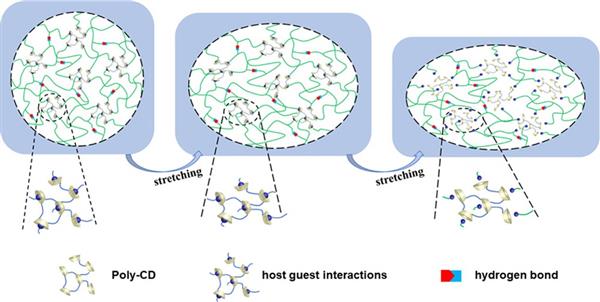Tough Self-Healing Elastomers Based on the Host–Guest Interaction of Polycyclodextrin
Inspired by animal muscles, we developed a kind of tough elastomers combining high strength and high stretchability with autonomous self-healing capability. A key structural feature is the construction of a double network (DN) connected by the hydrogen bond and host–guest interactions. The first network is the classic elastomer polyacrylate matrix cross-linked by strong hydrogen bonding. The second network is formed through the host–guest interactions between polycyclodextrin and the adamantane (Ad) groups on the side of the polyacrylate chain. Supramolecular interactions between two networks make them miscible and interpenetrate in the molecular level and then can share the load as the sample was stretched. The host–guest interactions act not only as sacrificial bonds for energy dissipation but also as self-healing driving forces. The tensile strength of the DN elastomer reaches about 6.7 MPa and the strain is as high as about 950%. The DN elastomer can be easy to repair by touching the damaged surface together at ambient conditions when broken or cut. The recovered tensile strength can reach over 4.5 MPa, which is better than the most pristine strength of existing spontaneous self-healing elastomers.

附文章链接:https://pubs.acs.org/doi/10.1021/acsami.9b00626